
Rodellar is the latest addition to Spain's hit-list of hard sport climbing destinations. Situated way up in the northeast of the country and well endowed with a mother-load of steep limestone - Rodellar is a sport climbing venue not to be missed. In this UKC Destination article, regular contributor Keith Sharples pays a visit and gives us the necessary info, plus his own personal experiences in the 'land of lactic'.
Extra thanks go to Ali Kennedy for his additional info and photos for this article.
Those who have had their ear to the ground will have heard that Rodellar is big and steep. I should tell you straight out that neither big nor steep get even close to describing Rodellar adequately. Let's talk about big to start with. Short pitches, 10 to 15m, do exist but 25 to 35m routes are much more typical and 40 to 50m pitches aren't as rare as you might think.
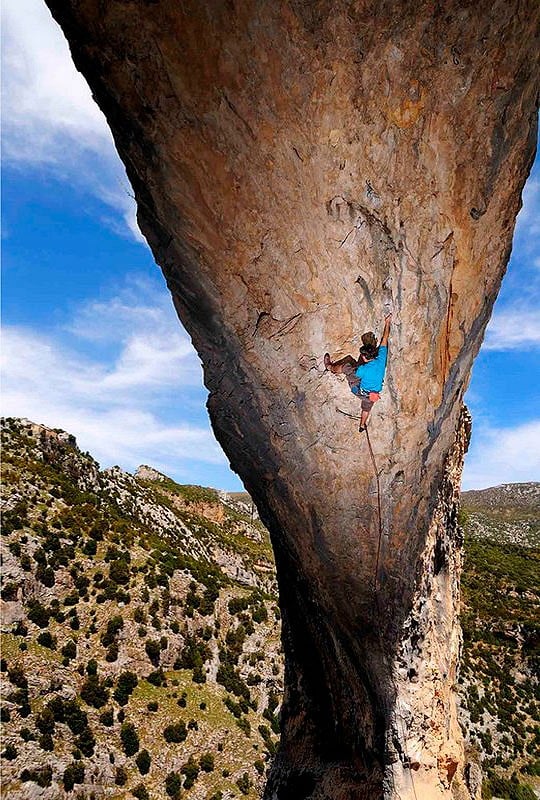
Expect to pack up to 16-20 draws for the longer lines, though if you are lucky you might find the route 'dressed', i.e. pre-equipped with in-situ quickdraws. OK; now let's talk steep. No matter where you've climbed, Rodellar will have somewhere steeper! Many routes are overhanging but, more often than you'd like, the rock at Rodellar is stupid steep. Rodellar redefines big and steep – welcome to the land of lactic!
So what's the climbing like at Rodellar? Truth is, it's not easy to characterise it as there's a real mix of everything. Tufa's are plentiful, as are flakes, blocks and jugs. Uber small crimps are rare though and proponents of Buoux-style pocket pulling will be disappointed; pockets do exist but these are usually big enough to get an arm or knee-bar. Another thing that you'll quickly notice once you've got a couple of routes under your belt is that the moves generally aren't hard for a given route grade. Most individual moves pretty much go first or second try; unusually (unlike here in the UK) there's little necessity to spend ages working individual moves. Sequences and clipping points are different though – time invested here is likely to pay dividends – especially if you're short on beans or long on years!
Another point worth highlighting about Rodellar is that I was quite shocked at the scale of the place and the awesome potential that still exists. The current guide lists over 300 routes on 37 sectors and there's a good few new routes that have been done since its publication. It is probably no exaggeration to say that there's more limestone at Rodellar than in the whole of the Peak. Just how much development there will be in the future is interesting to speculate – watch this (or rather – watch that...) space. Access is all too often the deciding factor, though in Rodellar's case there's also the no small issue of the environment to consider as well.
Sierre de Guara
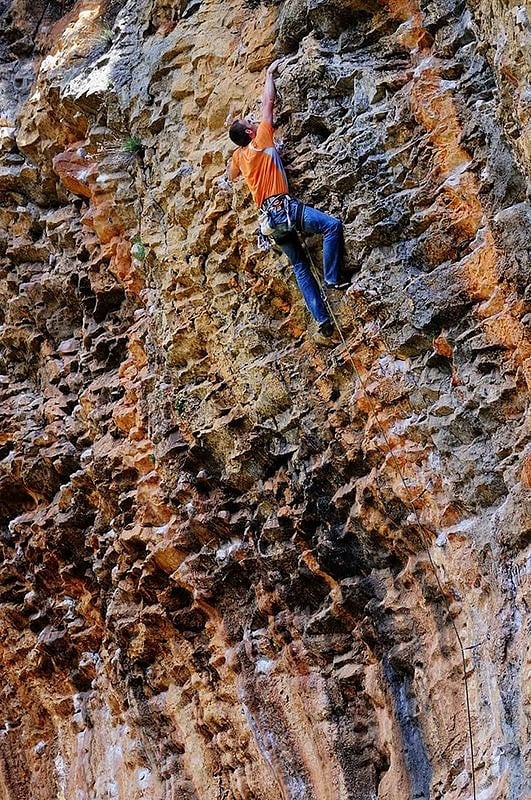
Rodellar is in the Parque de la Sierre y de los Canones de Guara (Sierre de Guara for short), which as well as being a right mouthful, is truly an area of outstanding beauty. Ravines, canyons and valleys abound in the area which is full of interesting animal and plant life. The Spanish authorities, mindful to protect the area, declared the region a Nature Reserve in 1990. There are a number of offences under the Park law which, as you'd expect, aims to protect the existing environment and enable it to prosper. In addition, there are bird restrictions at certain times of the year and bans on climbing in caves with paintings.
A potted history
Rodellar's relatively remote location, coupled with its poor public transport, meant that its development started later than other crags in the area. Huesca-based climbers centred their activities on crags like Riglos which were much more accessible. The earliest activities, during the Fifties, were (not surprisingly) aid-centric. Pinnacles and prominent features were popular targets and aid was used freely - if that's not a contradiction. There followed a dearth of activity until the Seventies when French climbers became active in the area. They were attracted to the 'open walls' at Rodellar rather than the steeply overhanging crags that are the bread and butter to today's sport climbers. During the 1980's a more 'modern' climbing style was widely adopted. The river-side crags of Mascun were the first to see grade 8 climbs at Rodellar. Importantly, they were done by local climbers and featured, for the first time, roofs.
The really big push though didn't kick-in until the Nineties when, bizarrely, the 'establishment' started to develop the sport climbing crags. Those heavily involved were in the GMGC, the Guardia Civil mountain rescue team and the Equipment Committee of the Aragonese Mountain Federation. Amongst their targets were El Camino, the great overhanging walls of Gran Boveda and Ventanas del Mascun. Numerous local climbers have had a hand in the development of Rodellar since then, as well as a few well-known hot-shots like Frenchmen Jean Minh Trinh-Thieu and François Lombard as well as Spain's own sport climbing dynamo, Dani Andradra. In the last couple of years, US climbers like Chris Sharma and Dave Graham have been active in the area.
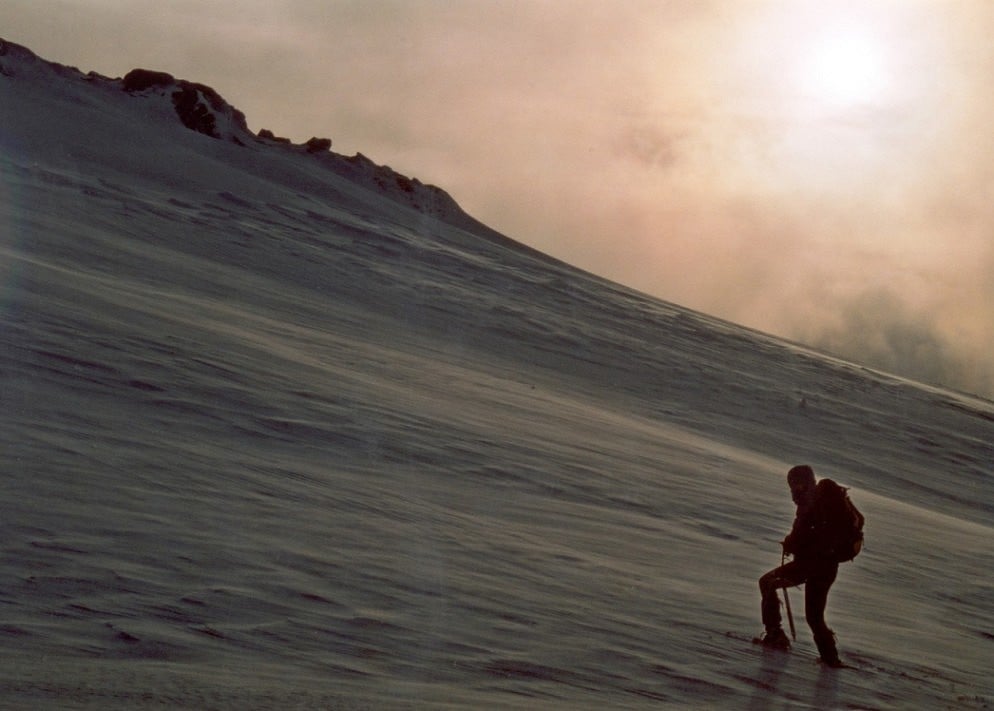
General layout and access
The climbing at Rodellar is currently centred on three valleys: Mascun, the middle valley; Alcanadre, the southern valley and Andrebot, the northern valley.
Mascun and Andrebot are accessed from Rodellar itself, whilst the approach to Alcanadre is from Camping El Puente a couple of kilometres south of Rodellar. Mascun runs north-south, whilst the other two are east-west valleys. Access times vary considerably but most sectors in Mascun can be reached in ten to twenty minutes. Walking from one end of Mascun to the other will also take about twenty minutes – river crossings dependant. Both Andrebot and Alcanadre take considerably longer to walk into; up to an hour for La Piscineta in Alcanadre for example, though this is very much the exception not the rule.
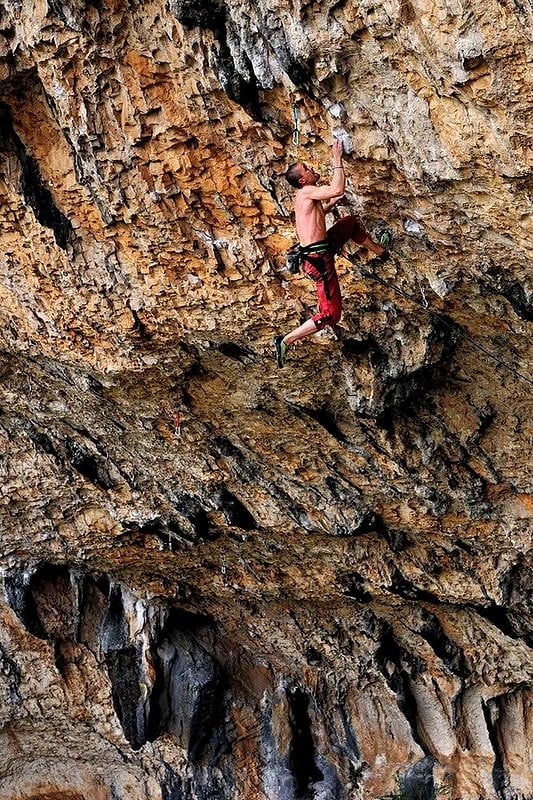
Mascun
Mascun is undoubtedly the main attraction at Rodellar and easily pulls-in the most climbers. From the village of Rodellar, a couple of trails drop down into the eastern side of the valley. The crags on this side of the valley generally face due west so are great morning venues as they are in the shade until early afternoon.
Not unexpectedly, the 'official' warm-up crag, El Camino, is on the east side of the valley – a haven of morning shade and a strong magnet for those looking for action in the upper 6th and lower 7th grades. A continuous wall of gorgeous orange-coloured vertical to slightly overhanging rock offers some very good routes up to 20 metres long. The other crags on this side are similarly shaded in the morning though they are less attractive and not as accommodating grade wise. A couple of crags, Boulder de Jon and Café Solo, at the bottom of the valley even face north west and are shade havens for much of the day. Along with Sector Egocentrismo these crags offer rich pickings for those climbing in the 7th grade. Expect steep and powerful climbing between 15 and 25 metres in length.
The west bank of Mascun is the business side. The crags, generally east-facing, get morning sun and ARE Rodellar for many. The show-piece crags, located in the middle of the valley, are Gran Boveda, Prince sans Rire and Ventanas del Mascun and let me tell you, they are to die for.
Working northwards up Mascun, Gran Boveda is itself a crag of thirds. The very left-hand end is a small overhanging cave-like crag; really quite reminiscent of some Peak District crimp-fest hovel. The left-of-centre sector is an overhanging tufa-town with a dozen or so excellent F7b+ to F7c+ to go at; expect to be pumped stupid 5 metres in and have to hang on for the remaining 20 metres like some cheap, battery-powered limpet toy. The central wall of Gran Boveda is Malhamesque both in stature and the way it climbs. Unusually for Rodellar, it's merely slightly overhanging. The right-of-centre sector at Gran Boveda is the main event; it's UBER big and steep. 50m routes of up to F8c exist here – not the place for the faint of heart.
Even Steve McClure admitted to being pumped after on-sighting Gladiator, a 40m F8b. Prince sans Rire is a smaller and more compact Gran Boveda, but tufa-featured overhanging walls still climb skyward further than pumped forearms will consider remotely reasonable. Skipping past a couple of lesser sectors, Aquest Any Si included – which in itself would be a decent enough crag at most venues - brings us to Las Ventanas del Mascun – another major crag. The easiest way to describe Ventanas is to think of it as North Buttress of Kilnsey with Kilnsey overhang stuck on top then times it by two! In a word – mega. You need to be climbing F8a upwards to do a deal here and be happy on steeply overhanging rock and roofs.
And then there's the cave at the back, Sector Delfin, an 'open' cave and home to a dozen or so routes between F7c+ and F9a. These are perhaps the very best of Rodellar but there are still more very worthwhile crags to check-out.
The far northern end of the valley has a couple of crags that have a little for everyone. Sector La Fuente, something of a Rodellar oddity, is even more beginner friendly than El Camino and the river-side, north-facing aspect leaves absolutely nothing to be desired if you want easy angled – yes that's right, easy angled – easy grade routes above a flat base in the valley bottom with a river to dangle your toes into between routes. Sounds good eh?
Sector Surgencia, La Fuente's neighbour, is however totally different. Fair enough, there's a (merely) vertical intro wall but the meat of this crag is a monster overhanging mass that would dwarf most crags – Kilnsey included. Another crag to mention, and whilst described last, is by no means least, is the bouldering paradise that is the Ali Ba Ba Cave. It has to be said that the vast majority of climbers don't go to Rodellar with the express view of climbing in Ali Ba Ba Cave – in fact most don't even consider it an option. Those that do venture into it's deep dark recesses will see something of an Aladine's Cave; four F8b+/8c, a F9a and top-of-the-stack Ali-Hulk F9b. The latter is Dani Andradra's hardest offering to date, a vicious power-pump in upside down land. Most of these lines involve bouldering with a short route section to finish.
Finally, I should say that there's another half dozen or so crags, all towards the bottom end of the valley, these feel a little off of the beaten path and hence aren't quite as popular. Doubtless they have their own tale's to tell.
Alcanadre, Andrebot and Beyond
More single-pitch sport climbing hides in the valleys beyond Mascun of which Sector La Piscineta, in Alcanadre, has some of the best rock and greatest potential in the area. However, Rodellar has one other card up its sleeve that might interest some of the more adventurous climbers amongst you; the multi-pitch mixed/aid climbing stuff. This is scattered around the place though if there's a concentration anywhere it's in the upper reaches of Mascun and to the north. A dozen or so crags, each with a few routes apiece, have multi-pitch mixed routes up to 200m in length. Farther afield, there's another handful of crags with routes over 250m in length. If it floats your boat then there's plenty to fill your boots with.
And for a personal account of Keith's visit read on
Consciousness returned slowly. My head was rolling, my stomach churning and my eyes refused to focus on anything. I tried to pretend that it wasn't happening but I failed.
I suffered in silence for what seemed an age but it was undeniable - I felt rough. It was a bad start to the trip. Sadly though, nothing stronger than bottled water had passed my lips. I guess I'd better explain. We, eight Brit climbers of various shapes, sizes and ages, were closing in on a trip to Rodellar, the latest 'must-visit' Spanish sport climbing venue.
The flight had been late and I'd dived for cover (and sleep) into the back of the hire car blissfully unaware of the heinous final 30 kms of super-bendy road that would lead us to our destination. Alex and Simon had drawn the short straw and were driving on the late shift. I awoke from the land of nod to experience them gunning the two hire cars round bend after bend on the final leg to our destination. I suffered in silence for a while but didn't feel any better; I have never been a good rear-seat passenger.
Eventually I pleaded with Simon. "Mate, if we take another bend at that speed I can't be responsible for want might happen..." Simon though was in the groove and in his element. In fairness he was only tailgating Alex who was cranking it out in front. I think I noticed a slight slowing down – just. Peugeot would have been impressed (I think...), although I doubt that they had designed the Partner van to be cornered quite that hard. Eventually a road sign proclaimed our arrival and a relief from the bends. The first Rodellar nightmare was over – and not a moment too soon.
"We, eight Brit climbers of various shapes, sizes and ages, were closing in on a trip to Rodellar, the latest 'must-visit' Spanish climbing venue"
A few hours kip was all we managed before it was time to get up and go climbing. It should have been a quick drive into Rodellar from the campsite but no sooner had we jumped into the car and got back onto the main road (joke) than we had to park-up. "What the hell are all these cars doing here" someone asked. We abandoned the car over a kilometre from the village and started the walk-in. Sure enough we'd got to Rodellar all right, but so too had the whole of northern Spain as well!
"It wasn't like this when I was here last" offered Steve. It's unusual to see Steve phased, but he appeared none to happy with the prospect of sharing Rodellar's finest with every Tom, Dick and Harry. Images of Buoux at Easter in the early 80's came flooding back into my memory when the mass invasion of a small provincial village had caused havoc and the locals pretty much flipped. I wondered if Rodellar was heading the same way.
By the time we'd walked into Rodellar itself we'd passed just about every European nationality we could name. May Bank in Spain was clearly holiday time; Rodellar had truly been invaded. Amongst the crowds though were plenty of canyoneers – scantily-clad individuals with full body harnesses and wet-bags. Perhaps with so many canyoneers in town, the crags wouldn't be rammed after all. We cheered up a bit. It didn't last long though, just about as long as it took to walk into the warm-up crag. It wasn't busy – it was totally rammed. We had little alternative but to muscle-in amongst the throng and warm-up on whatever was free. The score-line wasn't looking good; Rodellar two, Visitors nil.
Logistics
When to Go
September/October is probably the best time to go. All the tufas will be dry after summer and routes well chalked (if this is a positive thing?!) and the temperatures much more pleasant than in mid summer. In Spring (April and even into early May) the tufa routes can still be wet and often dirty from the runoff after winter, but the temperatures will be good and you might be lucky with the drainage.
Climbing is not ideal but definitely possible through the summer - a lot of people do - you just have to be prepared to climb in the shade and switch to late afternoon/evening sessions.
How to Get There
Basically 99.9% of all visitors do Rodellar on a fly and drive arrangement. Public transport pulls up short and hence the only other options would entail a taxi ride (probably expensive...) or thumbing a lift (unfashionable!). Any of the three Barcelona airports (Girnona, Barcelona or Reus) can be used; transit times by car vary between 3 ½ and 5 hours depending upon airport and traffic.
Accommodation Advertise here
No Premier Listings found in this area
Two alternative campsites exist: the in-town Camping Mascun or the out-of-town Camping El Puente which is a couple of kms back from Rodellar. Both are pretty big set-ups and both offer camping and stand-alone huts for up to 6 people. Just outside Rodellar itself, a modern hotel offers plush accommodation in the form of rooms or self-catering chalets. These compare favourably with the cost of the camping huts plus they have the additional attraction of a hotel swimming pool.
Another place to stay is the refuge, Kalandraka. It's a cheap place to stay if you don't have a tent with amazing views over the gorge from the terrace, free wifi, does ok food and is definitely the social centre of Rodellar, where most people hang out in the evenings. It's located past the church in the village, out on a promontary overlooking the gorge.
Food and Supplies
Basic supplies, including climbing and camping rudiments, can be bought from either of the two campsite shops. Water is available in the village itself. For a better selection of foodstuffs and other supplies head back out into the outside world to the likes of Huesca and Barbastro, both of which are an hour's drive away. Depending on your time of arrival, the smart money would be to stock up on the way into Rodellar.
Gear
A 70m rope and up to 16-20 quickdraws are needed for the longer routes. Even with a 70m rope, a double lower-off will be needed at times. A standard rack and a 60m rope will suffice for the shorter lines.
Outdoor Shops Advertise here
No Premier Listings found in this area
Guidebook
The most recent guide isn't available to buy over the internet (at least not that i can find anyway - there are lots of the old ones advertised). But it's available from the two campsites in Rodellar. However, even this is out of date already with tons of new routes having been done. You can pick up a small update leaflet from the campsites (out of date already though!) and there are also some more recently updated topos available to look at in camping el puente and the Kalandraka refuge. I heard rumours of a new guide being in production, but nothing concrete, so on that front I'm not sure.
Instructor/Guides Advertise here
No Premier Listings found in this area
Climbing Walls Advertise here
No Premier Listings found in this area
Other Activities
If you're after night life then forget it! There are a couple of bars in Rodellar itself and one at each of the campsites. Wireless internet (woo - exciting) is available at both campsites – free in the case of Camping El Puente. This is a cultural desert – deal with it or stay away!
The fantastic canyoning in and around Rodellar is supposedly one of the best areas in Spain. It's excellent for an active rest day or if it gets too hot. You can hire everything you need from either of the campsites, including a guided trip if you want. There's also some amazing walking around the village and surrounding hills. It's a beautiful place!
[articles_author() ]

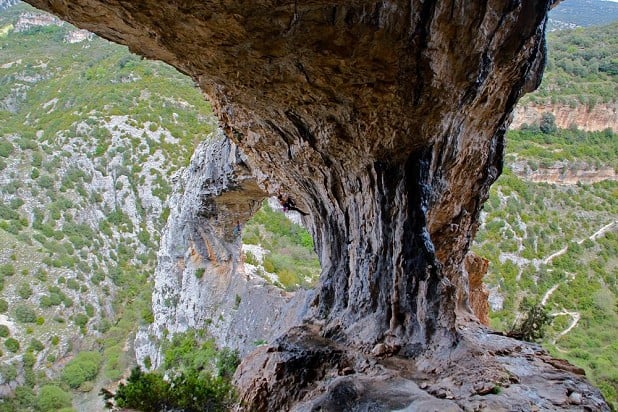
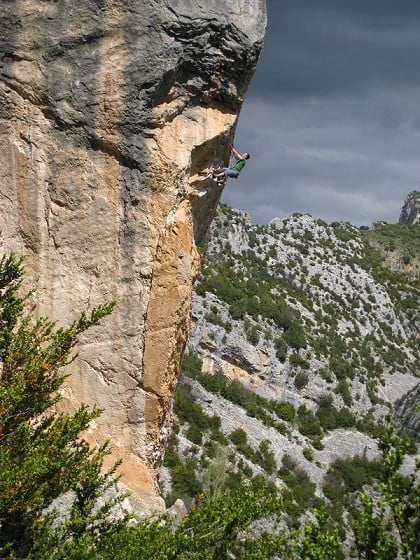
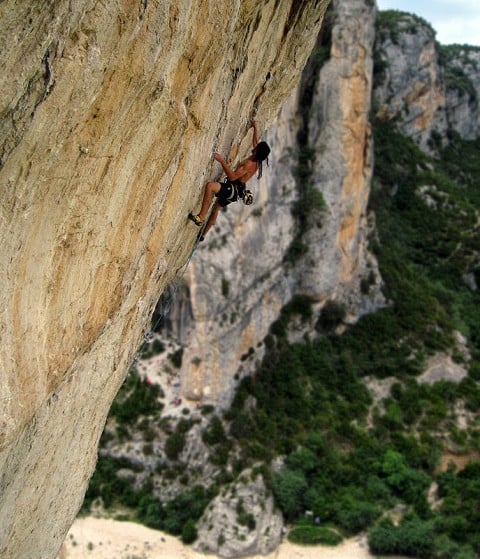
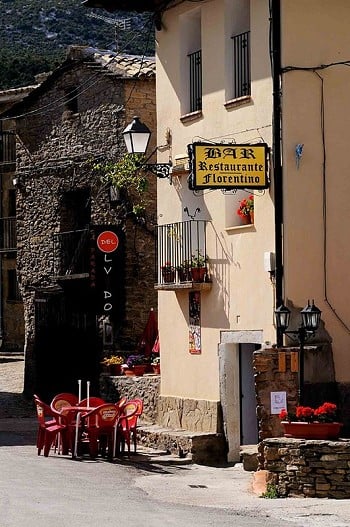
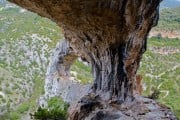

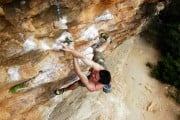

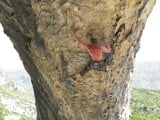


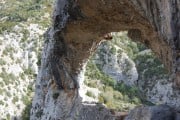

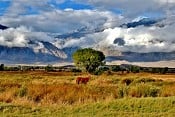

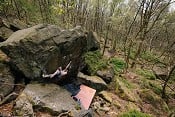
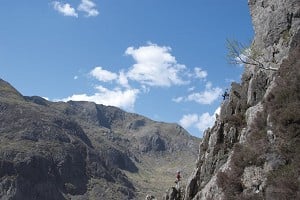




Comments